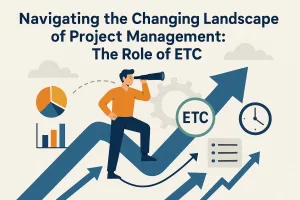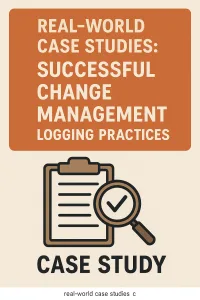Introduction to the Management Life Cycle
The management life cycle serves as a crucial framework that guides project managers and team leaders through the complexities of delivering successful projects. Understanding this life cycle is essential for ensuring that projects are executed efficiently, meet stakeholder expectations, and achieve desired outcomes.
Definition of the Management Life Cycle
The management life cycle refers to the series of phases that a project undergoes from its inception to its completion. This cycle encompasses various stages, including initiation, planning, execution, monitoring and controlling, and closure. Each phase plays a vital role in the overall success of the project, providing a structured approach to managing resources, timelines, and deliverables.
Importance of Understanding the Management Life Cycle for Project Success
Grasping the intricacies of the management life cycle is paramount for several reasons:
- Structured Approach: It offers a systematic method for managing projects, ensuring that all critical aspects are addressed at each stage.
- Risk Mitigation: By understanding the life cycle, project managers can identify potential risks early and implement strategies to mitigate them, thereby increasing the likelihood of project success.
- Resource Optimization: A clear understanding of each phase allows for better allocation and utilization of resources, which is essential for staying within budget and meeting deadlines.
- Stakeholder Engagement: Familiarity with the management life cycle enables project leaders to communicate effectively with stakeholders, ensuring that their needs and expectations are met throughout the project.
Overview of the Phases That Will Be Covered in the Blog
This blog will delve into each phase of the management life cycle, providing insights to illustrate their significance. The phases we will explore include:
- Initiation: Defining the project scope, objectives, and feasibility.
- Planning: Developing a comprehensive project plan that outlines tasks, timelines, and resources.
- Execution: Implementing the project plan, coordinating team efforts, and managing stakeholder communications.
- Monitoring and Controlling: Tracking project progress, managing changes, and ensuring alignment with project goals.
- Closure: Finalizing all project activities, delivering the final product, and conducting post-project evaluations.
By examining these phases in detail, project managers and team leaders will gain valuable insights into mastering the management life cycle, ultimately paving the way for project success.
Phase 1: Initiation
The initiation phase is a critical starting point in the management life cycle of a project. It lays the groundwork for all subsequent phases and is essential for ensuring that the project aligns with organizational goals and stakeholder expectations. Here’s a detailed exploration of this phase, including its definition, objectives, key activities, and a real-life case study that illustrates successful project initiation.
Definition and Objectives of the Initiation Phase
The initiation phase is defined as the process of formally starting a project. This phase is crucial for establishing the project’s purpose and scope, ensuring that all stakeholders have a clear understanding of what the project aims to achieve. The primary objectives of the initiation phase include:
- Defining the Project Scope: Clearly outlining what the project will deliver and what is outside its scope.
- Identifying Stakeholders: Recognizing all individuals and groups affected by the project, ensuring their needs and expectations are considered.
- Establishing Project Feasibility: Assessing whether the project is viable in terms of resources, time, and budget.
- Creating a Project Charter: Documenting the project’s objectives, scope, stakeholders, and overall vision, which serves as a reference throughout the project lifecycle.
Key Activities: Project Charter and Stakeholder Analysis
Two of the most significant activities during the initiation phase are the development of the project charter and conducting a stakeholder analysis.
- Project Charter: This document is a formal agreement that outlines the project’s objectives, scope, and stakeholders. It serves as a foundational reference that guides the project team and stakeholders throughout the project. The charter typically includes:
- Project title and description
- Objectives and success criteria
- Key stakeholders and their roles
- High-level project requirements
- Initial risks and assumptions
- Stakeholder Analysis: This process involves identifying all stakeholders and analyzing their interests, influence, and impact on the project. Effective stakeholder analysis helps project managers understand the dynamics of stakeholder relationships and develop strategies for engagement and communication. Key steps in stakeholder analysis include:
- Identifying stakeholders
- Assessing their influence and interest
- Developing a stakeholder engagement plan
The initiation phase is vital for setting the stage for project success. By defining the project scope, creating a project charter, and conducting stakeholder analysis, project managers can ensure that they have a solid foundation to build upon as they move forward in the management life cycle.
Phase 2: Planning
The planning phase of the management life cycle is a pivotal step in ensuring project success. It lays the groundwork for all subsequent activities and decisions, making it essential for project managers and team leaders to master this phase. Here, we will explore the key processes and deliverables involved in project planning, the significance of risk management and resource allocation, and provide a real-life case study that exemplifies effective project planning.
Overview of Project Planning Processes and Deliverables
Project planning involves a series of structured processes aimed at defining the project scope, objectives, and the means to achieve them. Key components of this phase include:
- Defining Project Scope: Clearly outlining what the project will deliver, including specific goals and objectives. This helps in setting expectations and boundaries for the project.
- Developing a Work Breakdown Structure (WBS): Breaking down the project into smaller, manageable tasks and deliverables. This hierarchical decomposition aids in better organization and tracking of project progress.
- Creating a Project Schedule: Establishing timelines for each task, including start and end dates, dependencies, and milestones. Tools like Gantt charts are often used to visualize the schedule.
- Budgeting: Estimating costs associated with resources, materials, and labor. A well-defined budget is crucial for financial control throughout the project.
- Communication Plan: Developing a strategy for how information will be shared among stakeholders, including regular updates and reporting mechanisms.
These deliverables serve as a roadmap for the project team, guiding them through execution and ensuring alignment with the project’s objectives.
Importance of Risk Management and Resource Allocation
Effective project planning cannot overlook the importance of risk management and resource allocation:
- Risk Management: Identifying potential risks early in the planning phase allows project managers to develop mitigation strategies. This proactive approach minimizes the impact of unforeseen issues on project timelines and budgets. Techniques such as SWOT analysis (Strengths, Weaknesses, Opportunities, Threats) can be employed to assess risks comprehensively.
- Resource Allocation: Properly allocating resources—human, financial, and material—is critical for project success. This involves not only assigning tasks to team members based on their skills and availability but also ensuring that the necessary tools and materials are in place. Effective resource management helps in optimizing productivity and reducing waste.
The planning phase is not merely a preliminary step; it is the foundation upon which successful projects are built. By understanding the processes involved, prioritizing risk management, and effectively allocating resources, project managers and team leaders can navigate the complexities of project execution with confidence. The case study of the Burj Khalifa serves as a powerful reminder of the impact that thorough planning can have on achieving project goals.
Phase 3: Execution
The execution phase of the management life cycle is where the project plan transforms into tangible results. This phase is critical as it involves the actual implementation of the project activities, requiring effective team management, clear communication, and diligent task completion. Here’s a closer look at the key components of this phase, along with a real-life case study that exemplifies successful execution.
Description of Execution Activities
- Team Management: During execution, project managers must lead their teams effectively. This involves assigning tasks based on team members’ strengths, providing necessary resources, and fostering a collaborative environment. Effective leadership ensures that team members are motivated and aligned with the project goals.
- Communication: Clear and consistent communication is vital in the execution phase. Project managers should establish regular updates and feedback loops to keep all stakeholders informed. This includes daily stand-ups, weekly progress reports, and open channels for addressing concerns. Effective communication helps in mitigating risks and resolving issues promptly.
- Task Completion: The execution phase is characterized by the actual work being done to meet project objectives. This includes developing deliverables, conducting tests, and implementing solutions. Project managers must ensure that tasks are completed on time and within budget, adhering to the quality standards set during the planning phase.
Monitoring and Controlling Processes During Execution
Monitoring and controlling are essential processes that run parallel to execution. They involve tracking project performance and making necessary adjustments to keep the project on course. Key activities include:
- Performance Measurement: Utilizing key performance indicators (KPIs) to assess progress against the project plan. This helps in identifying any deviations early on.
- Risk Management: Continuously evaluating risks and implementing mitigation strategies. This proactive approach ensures that potential issues are addressed before they escalate.
- Change Management: Managing changes in scope, schedule, or resources effectively. A structured change management process allows for flexibility while maintaining project integrity.
The execution phase is where project plans come to life. By focusing on team management, communication, and diligent task completion, along with robust monitoring and controlling processes, project managers can navigate this phase successfully, leading their projects to fruition.
Phase 4: Monitoring and Controlling
The Monitoring and Controlling phase is crucial for ensuring that a project remains aligned with its defined goals and objectives. This phase serves as a bridge between the planning and execution stages, allowing project managers to assess progress, identify variances, and implement necessary adjustments to keep the project on track.
Definition and Significance of Monitoring and Controlling
Monitoring and controlling involves the continuous oversight of project performance against the project management plan. This phase is significant for several reasons:
- Performance Measurement: It provides a framework for measuring project performance through key performance indicators (KPIs) and metrics, ensuring that the project is progressing as planned.
- Risk Management: By regularly reviewing project status, potential risks can be identified early, allowing for proactive mitigation strategies to be implemented.
- Stakeholder Communication: This phase facilitates effective communication with stakeholders by providing updates on project status, which helps in managing expectations and securing ongoing support.
Techniques for Tracking Project Performance and Making Adjustments
Several techniques can be employed during the monitoring and controlling phase to track project performance and make necessary adjustments:
- Earned Value Management (EVM): This technique integrates project scope, schedule, and cost to assess project performance. By comparing the planned progress with actual progress, project managers can determine if the project is on schedule and within budget.
- Regular Status Meetings: Conducting frequent status meetings with the project team allows for real-time updates on progress and challenges. This collaborative approach fosters transparency and encourages team members to voice concerns.
- Performance Reporting: Utilizing dashboards and performance reports can help visualize project data, making it easier to identify trends and variances. These reports can be shared with stakeholders to keep them informed and engaged.
- Change Control Processes: Implementing a structured change control process ensures that any changes to the project scope, schedule, or budget are carefully evaluated and documented, minimizing disruptions.
Example of a Project that Successfully Navigated Challenges Through Effective Monitoring
A notable example of effective monitoring and controlling can be seen in the Sydney Opera House project. Initially, the project faced significant delays and budget overruns due to design changes and construction challenges. However, the project management team implemented rigorous monitoring techniques, including:
- Frequent Performance Reviews: They conducted regular reviews of project milestones and adjusted timelines based on real-time data.
- Stakeholder Engagement: The team maintained open lines of communication with stakeholders, ensuring that any concerns were addressed promptly.
- Adaptive Management: By being flexible and responsive to challenges, the project team was able to make informed decisions that ultimately led to the successful completion of the iconic structure.
Through these efforts, the Sydney Opera House not only met its revised deadlines but also became a symbol of architectural innovation, demonstrating the power of effective monitoring and controlling in project management.
The Monitoring and Controlling phase is essential for project success. By employing various techniques to track performance and making timely adjustments, project managers can navigate challenges effectively and ensure that their projects align with strategic goals.
Phase 5: Closing
The closing phase of the management life cycle is a critical step in project management that ensures all aspects of the project are finalized and that the project is formally completed. This phase not only marks the end of the project but also sets the stage for future projects by capturing valuable insights and lessons learned. Here, we will explore the key steps involved in the closing phase, the significance of documentation, and a real-life case study that exemplifies effective project closure.
Key Steps in the Closing Phase
- Final Deliverables: The first step in closing a project is to ensure that all deliverables have been completed and meet the agreed-upon specifications. This includes verifying that all project outputs are delivered to the stakeholders and that they fulfill the project objectives. It is essential to conduct a thorough review of the deliverables to confirm their quality and completeness.
- Stakeholder Sign-off: Once the final deliverables are ready, obtaining formal sign-off from stakeholders is crucial. This step involves presenting the completed project to stakeholders for their approval. A sign-off signifies that stakeholders are satisfied with the outcomes and that the project can be officially closed. This process helps to mitigate any potential disputes regarding project deliverables and ensures that all parties are aligned.
- Project Review: Conducting a project review is an essential part of the closing phase. This involves evaluating the project’s performance against its initial goals and objectives. The project team should assess what went well, what challenges were faced, and how they were addressed. This review not only provides insights into the project’s success but also identifies areas for improvement in future projects.
The Importance of Lessons Learned and Documentation
One of the most valuable outcomes of the closing phase is the documentation of lessons learned. This process involves capturing insights gained throughout the project, including successes, failures, and unexpected challenges. Documenting these lessons is vital for several reasons:
- Knowledge Transfer: Lessons learned serve as a knowledge base for future projects, helping teams avoid repeating mistakes and replicate successes. This transfer of knowledge is particularly beneficial for new team members or organizations embarking on similar projects.
- Continuous Improvement: By analyzing what worked and what didn’t, organizations can refine their project management processes and methodologies. This continuous improvement approach fosters a culture of learning and adaptability within the organization.
- Stakeholder Communication: Proper documentation of lessons learned can enhance communication with stakeholders, demonstrating a commitment to transparency and accountability. It reassures stakeholders that the project team is dedicated to improving future project outcomes.
The closing phase of the management life cycle is not merely a formality; it is a vital component that ensures project success and lays the groundwork for future endeavors. By following the key steps of final deliverables, stakeholder sign-off, and project review, and by emphasizing the importance of lessons learned, project managers can enhance their effectiveness and contribute to the overall success of their organizations.
Best Practices for Managing the Life Cycle
Mastering the management life cycle is crucial for project success, and implementing best practices across all phases can significantly enhance outcomes. Here are some actionable strategies that project managers and team leaders can adopt:
1. Emphasizing Communication and Collaboration
- Foster Open Communication: Establish a culture where team members feel comfortable sharing ideas, concerns, and updates. Regular check-ins and open-door policies can facilitate this environment.
- Utilize Collaborative Tools: Leverage platforms like Slack, Microsoft Teams, or Asana to enhance real-time communication and collaboration. These tools help keep everyone on the same page and can streamline discussions around project goals and progress.
- Stakeholder Engagement: Regularly engage with stakeholders to ensure their expectations are aligned with project objectives. This can be achieved through scheduled updates, feedback sessions, and inclusive decision-making processes.
2. Utilizing Tools and Software for Project Management
- Project Management Software: Invest in robust project management tools such as Trello, Jira, or Monday.com. These platforms can help in tracking progress, assigning tasks, and managing deadlines effectively.
- Data Analytics: Use analytics tools to monitor project performance metrics. This data can provide insights into areas needing improvement and help in making informed decisions.
- Documentation and Reporting: Maintain thorough documentation throughout the project life cycle. This includes project plans, meeting notes, and progress reports, which can serve as valuable references for future projects.
3. Continuous Improvement through Feedback Loops and Retrospectives
- Implement Feedback Loops: Create mechanisms for continuous feedback from team members and stakeholders. This can include surveys, suggestion boxes, or regular feedback sessions to gather insights on what is working and what isn’t.
- Conduct Retrospectives: At the end of each project phase, hold retrospective meetings to discuss successes and challenges. This practice encourages reflection and learning, allowing teams to adapt and improve in subsequent phases.
- Adapt and Evolve: Be willing to adjust project plans based on feedback and lessons learned. Flexibility in management practices can lead to better alignment with project goals and stakeholder expectations.
By integrating these best practices into the management life cycle, project managers can enhance communication, leverage technology effectively, and foster a culture of continuous improvement. This holistic approach not only drives project success but also cultivates a more engaged and productive team environment.
Conclusion: The Continuous Journey of Project Management
Understanding and mastering the management life cycle is not merely an academic exercise; it is a vital practice that can significantly influence the success of projects. As we have explored, the management life cycle consists of several interconnected phases, each playing a crucial role in guiding a project from inception to completion.
Summary of the Phases and Their Interconnections
The management life cycle typically encompasses the following phases:
- Initiation: This phase involves defining the project at a broad level, establishing its feasibility, and securing necessary approvals. It sets the foundation for all subsequent activities.
- Planning: Here, detailed planning takes place, including defining objectives, scope, resources, timelines, and risk management strategies. This phase is critical as it outlines how the project will be executed and controlled.
- Execution: During execution, the project plan is put into action. This phase requires effective coordination of people and resources, as well as ongoing communication with stakeholders to ensure alignment with project goals.
- Monitoring and Controlling: This phase runs concurrently with execution and involves tracking project performance against the plan. It includes managing changes and ensuring that the project stays on track regarding scope, time, and budget.
- Closure: The final phase involves completing all project activities, obtaining stakeholder acceptance, and conducting a post-project evaluation to capture lessons learned for future projects.
These phases are not isolated; they are interconnected and often iterative. For instance, insights gained during the monitoring and controlling phase may necessitate adjustments in planning or execution, highlighting the dynamic nature of project management.
By mastering the management life cycle, you not only enhance your project management skills but also contribute to the success of your organization. Embrace this continuous journey, and let it guide you toward achieving project excellence.
Find out more about Shaun Stoltz https://www.shaunstoltz.com/about/.
This post was written by an AI and reviewed/edited by a human.



